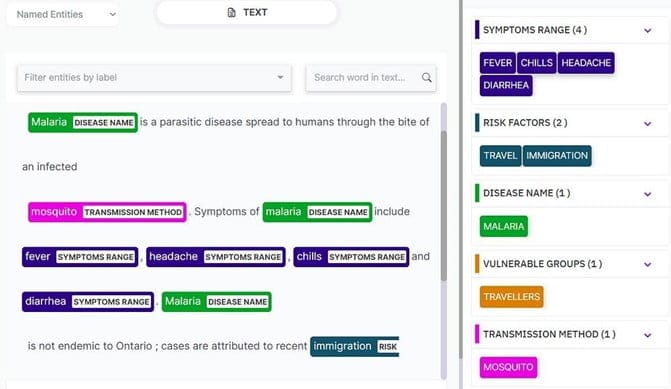AI is playing a huge role in the future of software development. We covered some of the important aspects of it in this article.
Developing AI programs can be a very complicated task. You will need to do your due diligence to make sure that you understand all of the technical nuances that go into the process.
We have already talked about some of the programming languages that can be used to create big data and AI programs. Python is the best language on the list. However, there are a lot of things that you need to know when learning a new language. One of the things that you have to be aware of is the importance of using NLP.
NLPs Are the Foundation of Developing AI Programs
Natural Language Processing (NLP) stands at the forefront of the intersection between computer science and linguistics, playing a pivotal role in various applications. Among its key components, entity extraction is a critical technique for gleaning valuable information from unstructured data.
This article aims to provide an in-depth exploration of entity extraction in NLP, offering technical insights and practical tips for mastering this essential skill.
1- Understanding the basics of NLP
Before delving into entity extraction, it’s crucial to grasp the fundamentals of NLP. Dive into the foundational concepts, principles, and common techniques that underpin natural language processing.
Familiarity with tokenization, part-of-speech tagging, and syntactic parsing lays the groundwork for a comprehensive understanding of the intricacies involved in entity extraction.
For instance, consider the Python NLTK library for NLP basics. Below is a simple code snippet illustrating tokenization:
import nltk
from nltk.tokenize import word_tokenize
text = "Entity extraction is a crucial aspect of NLP." tokens = word_tokenize(text)
print(tokens)
This code utilizes NLTK to tokenize the given text, breaking it down into individual words for further analysis.
2- Defining entity extraction
Dive into the core concept of entity extraction to understand its significance in NLP.
Entities refer to specific pieces of information within text and extend beyond to various types of data, including databases, spreadsheets, images, and videos. In this comprehensive understanding, entities can take the form of objects, subjects, or elements that carry distinct and identifiable information.
Recognizing and classifying these entities is fundamental to extracting meaningful insights from unstructured data.
Consider the following example using a text annotation tool:

In this example, we showcase an example of entity extraction using KUDRA (NLP processing application).
Utilizing such NLP processing applications is crucial in defining entity extraction. These tools employ sophisticated algorithms, machine learning models, and rule-based systems to identify and categorize entities within text.
NLP processing applications play a pivotal role in defining entity extraction by:
- Automated Recognition: These applications automate the identification of entities, sparing users from manual extraction and speeding up the process.
- Multi-Modal Extraction: Entities are not limited to text; NLP applications can extract information from various data types, fostering a comprehensive understanding.
- Enhanced Accuracy: Leveraging advanced algorithms, these applications enhance accuracy in recognizing and classifying entities, reducing errors associated with manual extraction.
- Adaptability: NLP applications can adapt to evolving linguistic patterns and diverse data sources, ensuring flexibility in defining and extracting entities.
→ Incorporating NLP processing applications is essential for a robust definition and implementation of entity extraction, offering efficiency, accuracy, and adaptability in dealing with unstructured data.
3- NLP techniques for entity extraction
Explore a range of NLP techniques applicable to entity extraction, including rule-based systems, machine learning models, and deep learning approaches. Each method comes with its strengths and weaknesses, making it essential to choose an approach aligned with specific use cases and data characteristics.
Consider implementing a rule-based system using spaCy:
SpaCy stands out as a powerful library that combines efficiency and simplicity. When considering entity extraction, spaCy provides a rule-based approach that allows for precise control over patterns and linguistic rules.
import spacy
nlp = spacy.load("en_core_web_sm")
text = "Alex Smith was working at Acme Corp Inc." doc = nlp(text)
for ent in doc.ents:
print(f"{ent.text} - {ent.label_}")
4- Overcoming challenges in entity extraction:
Entity extraction faces challenges such as ambiguity, context dependency, and handling diverse data sources. To address these issues, it’s crucial to employ advanced strategies, and integrating Language Models (LLM) provides an effective solution.
Consider a scenario where the entity “Apple” could refer to the technology company or the fruit. By incorporating LLMs, such as GPT-3, into the entity extraction process, we can perform a more nuanced analysis. These models
can understand context, helping differentiate the intended meaning based on the overall text.
5- Staying update with NLP advancement:
NLP is a rapidly evolving field, witnessing continuous advancements and breakthroughs. Stay informed about the latest research papers, models, and techniques in entity extraction.
Regularly check platforms like arXiv and GitHub for cutting-edge developments, ensuring your entity extraction methods remain at the forefront of NLP innovation.
6- Real world example
Example : Healthcare Domain
In the healthcare sector, entity extraction plays a crucial role in extracting valuable information from medical records. Consider a scenario where a hospital is analyzing a large dataset of patient records to identify potential outbreaks or trends in diseases.
Entity extraction can help in recognizing entities such as patient names, medical conditions, and medications. This information can then be used to improve patient care, identify patterns in the spread of diseases, and enhance overall healthcare management.
Conclusion
Mastering entity extraction within Natural Language Processing (NLP) demands a solid foundation, technical expertise, and a commitment to staying informed about advancements. By incorporating these five key tips, you can elevate your proficiency in entity extraction, contributing to the dynamic landscape of natural language processing. Whether through rule- based systems, machine learning models, or deep learning approaches the thoughtful and informed approach, along with technical expertise, empowers you to extract meaningful insights from the vast expanse of unstructured data.